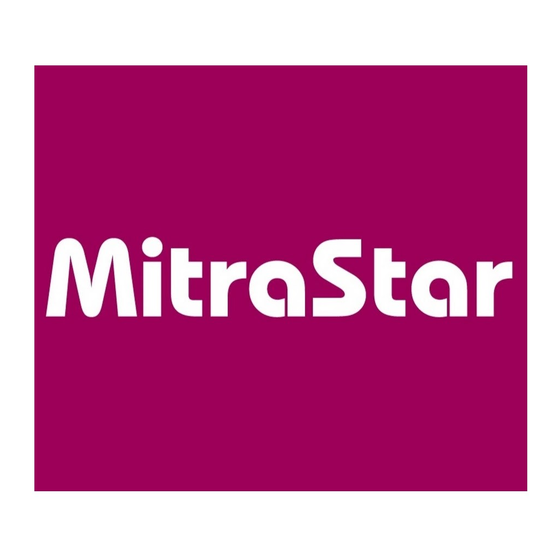
Summary of Contents for MitraStar MIO-6706
- Page 1 Quick Start Guide MIO-6706 Development Kit Edition 1, 5/2021 Copyright © 2021 MitraStar Technology Corp.
-
Page 2: Table Of Contents
Table of Contents Table of Contents Table of Contents ..........................2 Chapter 1 Introduction............................3 1.1 MIO-6706 Overview ..........................3 Chapter 2 The Development Kit ..........................4 2.1 The Dimensions ..........................4 2.2 Connecting the Boards and Powering Up ...................4 2.3 Connecting to a Computer and Starting Up ..................4 2.4 Other Information ..........................7... -
Page 3: Chapter 1 Introduction
The Wi-SUN (Wireless Smart Ubiquitous Network) Module Development Kit lets you try out the MIO-6706 Wi-SUN Module. The MIO-6706 is a Wi-SUN Module designed to be integrated with IoT sensors and gateways for data transfer. The Wi-SUN network technology follows IEEE 802.15.4g/e and supports most available sub-GHz frequencies. -
Page 4: Chapter 2 The Development Kit
You can access the Development Kit via various command tools in Linux and Windows environments. The following example uses Windows 10 and Tera Term. In Windows, open Device Manager and check for a new COM port. COM8 is used in this example. MIO-6706 Quick Start Guide... - Page 5 Chapter 2 The Development Kit Figure 1 New COM Port Open Tera Term and click Setup > Serial port..Figure 2 Tera Term: Setup > Serial port... MIO-6706 Quick Start Guide...
- Page 6 Figure 3 Select Port Set the baud rate in the Speed field to 115200. Click OK to save the settings. Figure 4 Set Speed The following screen appears. You can now start using commands for the Development Kit. MIO-6706 Quick Start Guide...
-
Page 7: Other Information
Table 1 Other Information Environmental • Operating Temp: -20°C~+70°C Requirements • Storage Temp: -30°C~+85°C • Operating Humidity: 10% to 90% Non-Condensing • Storage Humidity: 10% to 95% Non-Condensing Other Requirements • Timer function • Heat resistance and fireproofing MIO-6706 Quick Start Guide... -
Page 8: Regulations/Certifications
Regulations (draft report only) Table 2 Regulations/Certifications COUNTRY/ CERTIFICATION STANDARD FREQUENCY BAND REGION U.S.A. FCC Part 15C 902 - 928 MHz 902 - 928 MHz §15.247 Taiwan LP0002 §5.8 Taiwan, Asia Regions 920 - 925 MHz MIO-6706 Quick Start Guide... -
Page 9: Wi-Sun Module Specifications
11.28 dBm at 150 kbps 8.37 dBm at 300 kbps Sensitivity in Wi-SUN mode: -98 dBm at 50 kbps -96 dBm at 100 kbps -94 dBm at 150 kbps -91 dBm at 300 kbps Antenna Defined by customer MIO-6706 Quick Start Guide... -
Page 10: Other Information
The I O board provides + 3.3V power t o t he syst em . 3.5 GPIO for Sub-1G TX/RX Switching Figure 6 Trut h Table 3.6 Regulation/Certifications Regulat ions ( EVT Test only, no cert ificat e) Table 5 Regulations CERTIFICATION STANDARD FCC Part 15C § 15.247 LP0002 §5.8. MIO-6706 Quick Start Guide... - Page 11 Ant enna Gain HongBo 290- 10540 PCB Ant enna - 0.43 dBi Ant enna ( 2) Manufact urer Model No. Ant enna Type Ant enna Gain HongBo 56- 001- 000023Z PCB Ant enna - 0.85 dBi MIO-6706 Quick Start Guide...
- Page 12 Ant enna Gain HongBo 290- 10540 PCB Ant enna - 2.05 dBi Ant enna ( 2) Manufact urer Model No. Ant enna Type Ant enna Gain HongBo 56- 001- 000023Z PCB Ant enna - 1.01 dBi MIO-6706 Quick Start Guide...

Need help?
Do you have a question about the MIO-6706 and is the answer not in the manual?
Questions and answers